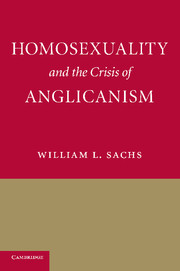Book contents
- Frontmatter
- Contents
- Acknowledgements
- 1 A definitive moment
- 2 The shape of early Christian unity
- 3 When ideals encounter realities
- 4 Reform and the power of the periphery
- 5 Anglican tradition and local prerogative
- 6 The triumph of indigenous Anglicanism
- 7 The rise of Liberalism
- 8 In search of the pure church
- 9 Beyond warring parties?
- Index
- References
4 - Reform and the power of the periphery
Published online by Cambridge University Press: 05 June 2012
- Frontmatter
- Contents
- Acknowledgements
- 1 A definitive moment
- 2 The shape of early Christian unity
- 3 When ideals encounter realities
- 4 Reform and the power of the periphery
- 5 Anglican tradition and local prerogative
- 6 The triumph of indigenous Anglicanism
- 7 The rise of Liberalism
- 8 In search of the pure church
- 9 Beyond warring parties?
- Index
- References
Summary
THE SOURCES OF REFORM
By the middle of the eighteenth century the Church of England was not in fact what it claimed to be in theory. The church's privileges and role in the nation were legally enshrined; but the achievement of religious establishment was far from complete. A wide swath of church leadership sought a balance between the ideals of comprehension and holiness to permit church life that was both co-extensive with the nation and faithful to the gospel. A broad ecclesiastical framework touching all sectors of society, standard forms of worship that were pervasively used, and widely held theological principles suggested that establishment had been achieved, the reality of dissent notwithstanding. Indeed the ideal of establishment and the way the Hanoverian church construed it left lasting marks on Anglicanism, especially the intention of both mirroring and guiding national life. But establishment was an unfulfilled ideal. Despite the church's intention of uniting various religious sensibilities it fell short. The Non-Juror schism and its legacy were but one instance. A notable Tory religious party sustained an alternative sensibility within the church. Challenges from local contexts also began to outpace establishment's ability to absorb new influences. In the second half of the eighteenth century the combination of religious restlessness and establishment inertia led to efforts to reform the religious landscape. In this chapter we consider how church reform arose, the forms it took, and how it became a lasting Anglican ideal.
- Type
- Chapter
- Information
- Homosexuality and the Crisis of Anglicanism , pp. 86 - 113Publisher: Cambridge University PressPrint publication year: 2009



